Superimposed Renewal of Industrial Heritage under the Guidance of Low Maintenance and Sustainability—Renewal of Refinery Site in Jinan Tianhong Community
Abstract
:1. Introduction
2. Literature Review
2.1. Research on the Reuse of Industrial Heritage
2.2. A Review of Low Maintenance Sustainable Design Research
2.3. Research Gapa
2.3.1. The Lack of Research on Secondary Renewal of Industrial Heritage
2.3.2. The Lack of Research on the Application of Sustainable Design in the Renewal of Industrial Heritage
3. Method: Secondary Renewal Method under the Guidance of Low Maintenance Sustainability
3.1. Strategy 1: Build a Water Circulation System
3.2. Strategy 2: Choose Energy Efficient Materials
- Municipal drainage, urban waterlogging and excessive water accumulation on the road surface, and ensure the circulation of surface water and the storage of underground water sources;
- Reduce noise pollution;
- Ensure the permeability, water retention and air permeability of the ground;
- Adjust temperature, improve air quality and regulate ecological balance.
3.3. Strategy 3: Low Maintenance Plant Selection
- Choose plants that are native and have low management costs. Native plants are easy to source, inexpensive to purchase, have a high survival rate, require less maintenance, less irrigation, pruning and management costs at a later stage, while choosing plants with a long growth cycle, high survival rate and pruning resistance. Avoid using a large number of grasses and potted flowers [35].
- Choose participatory plants. Social participation in greenery planting activities can indirectly reduce maintenance costs for managers. Public welfare landscape forestry which is easy to maintain can better attract social participation, such as economic fruit trees, not only for people to enjoy, and their fruits also have a certain economic benefit, so the costs saved can be used for later plant maintenance, and it indirectly reduces the cost of landscape maintenance.
- Ensure community planting, by trying to create a small lawn, a moderate number of trees and a sufficient number of shrubs. The plants in the community are more viable and require lower late-management costs. In the construction of the plant community, we should insist on the combination of trees, shrubs and grasses, with trees being the main design plan. Trees have a longer growth cycle and are easier to maintain. In order to create a spatial hierarchy and walking experience in dense forest areas, the plant configuration should be richly layered, enclosing the space with the help of plants and distributing them with flowering and fragrant plants to stimulate people’s desire to explore, such as using soapberry, loblolly pine, elm and cedar for trees, pearl plum, red raspberry, purple magnolia and golden silver wood for shrubs, and paving loblolly pine, iris, maidenhair and cassia for ground cover plants.
- Choose plants with a strong self-cleaning ability, such as an outer barrier plant configuration to absorb harmful gases, dust and noise-blocking plants, for trees choose big-leaved maidenhair, acacia, cedar and long-clawed acacia, for shrubs choose golden-leaved maidenhair, sea tree, zinnia and purple yucca, for ground-cover plants choose pavement loblolly pine, iris, maidenhair and cassia. Secondly, the use of wetland landscapes, which are relatively stable due to the complexity of the system, requires little human intervention as they are self-maintaining and can be used more often when available. The plant configuration of the ecological wetland area is based on plants that are resistant to water and humidity, such as weeping willow, sequoia, red maple and peach trees for trees, and aquatic iris, Chiffchaff, lotus, water lilies, reeds, cattails and water bamboo in terms of aquatic plants.
- The use of green roofing techniques [36] on landscape structures also enhances roof insulation and soundproofing. Choose light-loving, temperature-resistant, cold-resistant, heat-resistant, drought-resistant, barren and vigorous flowering plants to achieve a staggered height of plants and flowers. The main plant species include red-leaved heather balls, small-flowered gardenias, small-leaved boxwoods, golden-sided boxwoods, Hellebore balls and self-purchased finished potted plants, and select vine plants to increase ornamental properties.
3.4. Strategy 4: Rational Terrain Treatment for Energy Recycling and Low Maintenance Costs
3.5. Strategy 5: The Use of Solar Energy
3.6. Strategy 6: Use Natural Air for Ventilation Circulation
3.7. Strategy 7: Design of a Play Tower Based on the Combination of Bionics with Thermal Energy Use and Water Circulation Systems
3.8. Strategy 8: Integration of Industrial Heritage and Nature
4. Results
5. Conclusions
Author Contributions
Funding
Conflicts of Interest
References
- Minchinton, W. World industrial archaeology: A survey. Null. Routledge 1983, 15, 125–136. [Google Scholar] [CrossRef]
- Du, L.; Duan, Y. The road to the recognition and protection of modern industrial heritage. Chin. Mus. 2019, 2, 16–22. [Google Scholar]
- Cui, W.; Gong, L. Geographical and Industrial Distribution and Value characteristics of world industrial heritages: Statistical analysis of industrial heritages inscribed in world heritage list. Econ. Geogr. 2011, 31, 162–165+176. [Google Scholar]
- Cui, W.; Wang, Z.; Xu, B. Spatial structure and determinants of world industrial heritages. Econ. Geogr. 2017, 37, 198–205. [Google Scholar]
- Ye, Y.; Li, S. The Experience and Model of the Conservation and Reuse of Industrial Heritage Home and Abroad. Shanghai Urban Plan. Rev. 2007, 3, 50–53. [Google Scholar]
- Zhang, S. Conservation and adaptive reuse of industrial heritage in Shanghai. Front. Archit. Civ. Eng. China 2007, 1, 481–490. [Google Scholar] [CrossRef]
- Shan, J. On protection of industrial heritage, a new form of cultural heritage. China Cult. Herit. 2006, 4, 6+10–47. [Google Scholar]
- Lu, S. Ruins or Landscapes? -Research on the Development and Design of Urban Dock Industrial Zones. Huazhong Archit. 1999, 17, 102–105. [Google Scholar]
- Wang, J.; Jiang, N. Protective Reuse of Chinese Industrial Historic Building Heritage in the Post-industrial Age. Archit. J. 2006, 8, 12. [Google Scholar]
- Burton, I. Report on reports: Our common future: The world commission on environment and development. Environ. Sci. Policy Sustain. Dev. 1987, 29, 25–29. [Google Scholar] [CrossRef]
- Papanek, V.; Fuller, R.B. Design for the Real World; Academy Chicago Publishers: Chicago, IL, USA, 2005; pp. 81–108. [Google Scholar]
- Dong, L. Research on the Design Strategies for Low Cost Landscape Architecture; Beijing Forestry University: Beijing, China, 2013. [Google Scholar]
- Ceschin, F.; Gaziulusoy, I. Evolution of design for sustainability: From product design to design for system innovations and transitions. Des. Stud. 2016, 47, 118–163. [Google Scholar] [CrossRef]
- Pigosso, D.C.; McAloone, T.C.; Rozenfeld, H. Characterization of the state-of-the-art and identification of main trends for Ecodesign Tools and Methods: Classifying three decades of research and implementation. J. Indian Inst. Sci. 2015, 95, 405–428. [Google Scholar]
- Heiskanen, E.; Jalas, M. Dematerialization through Services—A Review and Evaluation of the Debate; Ministry of the Environment: Helsinki, Finland, 2000; pp. 6–35.
- Faber, N.; Jorna, R.; Van Engelen, J.O. The sustainability of ‘sustainability’—A study into the conceptual foundations of the notion of ‘sustainability’. In Tools, Techniques and Approaches for Sustainability: Collected Writings in Environmental Assessment Policy and Management; World Scientific: Singapore, 2010; pp. 337–369. [Google Scholar]
- Dong, L.; Wang, X. Low Intervention, Low Consumption, Low Conservation, and Low Emission—Research on low cost Landscape Architecture. Chin. Landsc. Archit. 2013, 29, 61–65. [Google Scholar]
- Gao, K.; Zou, K.; Jiang, Z.; Yang, L. Construction of an Indicator System for Information Security Risk Assessment of Smart City. J. Mod. Inf. 2022, 42, 110–119. [Google Scholar]
- Wu, L.; Li, W.; Chen, L.; Li, J. Impact of Smart City Construction on Eco-innovation: Empirical Analysis Based on City-level Panel Data. J. Technol. Econ. 2022, 41, 1–16. [Google Scholar]
- Guo, J.; Wang, J.; Jiang, L.; Zhang, H.; Huang, G. From technocentrism to humanism: Progress and prospects of smart city research. Prog. Geogr. 2022, 41, 488–498. [Google Scholar] [CrossRef]
- Zhu, D. Post Occupancy Evaluation and Optimization Straregies of the Waterfront Industrial Heritages in Hangzhou Qiaoxi Historic District. Master’s Thesis, Harbin Institute of Technology, Harbin, China, 2016. [Google Scholar]
- Qian, Y.; Ren, H.; Tang, J. A Framework for Assessing the Sustainability if Industrial Sites Protection and Reuse Under Stakeholders Analysis. Urban Dev. Stud. 2019, 26, 72–81. [Google Scholar]
- He, H.; Zheng, K.; Huang, H.; Li, X. Study on Comprehensive Evaluation of the Satisfaction Degree of Urban Industrial Heritage: A Case Study of Nanchang Cultural and Creative Park. Urban Dev. Stud. 2017, 24, I0005-10. [Google Scholar]
- Zeng, P.; Li, J. Study on the Active Mechanism and Optimization Path of the Policy System in Stock Industrial Land Regeneration. Mod. Urban Res. 2020, 7, 67–74. [Google Scholar]
- Liang, Y.; Sun, Z.; Jiang, W. ‘Market lnducement’ and ‘Government Failure’:Dilemma and Planning of Industrial Land Renewal—Take Suzhou Industrial Park as an Example. Urban Plan. Forum 2018, 6, 94–102. [Google Scholar]
- Yang, D.; Chen, S.; Niu, W. Review on four representative index systems of sustainable development. Sci. Manag. Res. 2001, 4, 58–61+72. [Google Scholar]
- Costanza, R.; d’Arge, R.; De Groot, R.; Farber, S.; Grasso, M.; Hannon, B.; Limburg, K.; Naeem, S.; O’neill, R.V.; Paruelo, J.; et al. The value of the world’s ecosystem services and natural capital. Nature 1997, 387, 253–260. [Google Scholar] [CrossRef]
- Kasprzyk, M.; Szpakowski, W.; Poznańska, E.; Boogaard, F.C.; Bobkowska, K.; Gajewska, M. Technical solutions and benefits of introducing rain gardens–Gdańsk case study. Sci. Total Environ. 2022, 26, 155487. [Google Scholar] [CrossRef]
- Capodaglio, A.G. Fit-for-purpose urban wastewater reuse: Analysis of issues and available technologies for sustainable multiple barrier approaches. Crit. Rev. Environ. Sci. Technol. 2021, 51, 1619–1666. [Google Scholar] [CrossRef]
- Capodaglio, A.G. Taking the water out of ‘wastewater’: An ineluctable oxymoron for urban water cycle sustainability. Water Environ. Res. 2020, 92, 2030–2040. [Google Scholar] [CrossRef] [PubMed]
- Gao, Q.; Yu, M. Development of Heating and Cooling Equipment with Saving Energy & Environment Protection—Ground Source Heat Pump System. J. Jilin Univ. (Eng. Technol. Ed.) 2001, 31, 96–102. [Google Scholar]
- Bai, Y.; Liu, Y. The Development Situation and Prospect of Diatom Ooze in China. Mod. Paint. Finish. 2014, 3, 34–36. [Google Scholar]
- Pan, W. A Sketch of Energy-Saving Principle of low E Insulting Glazing Unit. Glass 2007, 34, 60–63. [Google Scholar]
- Xia, F.; Ji, K.; Wang, J. The Construction of the Selection System for Low Maintenance Plants in Urban Green Space. Chin. Landsc. Archit. 2012, 28, 85–89. [Google Scholar]
- Weston, L.A.; Eom, S.H. Utilization of stress tolerant, weed suppressive groundcovers for low maintenance landscape settings. In Allelopathy in Sustainable Agriculture and Forestry; Springer: New York, NY, USA, 2008; pp. 347–361. [Google Scholar]
- Abdalazeem, M.E.; Hassan, H.; Asawa, T.; Mahmoud, H. Review on integrated photovoltaic-green roof solutions on urban and energy-efficient buildings in hot climate. Sustain. Cities Soc. 2022, 28, 103919. [Google Scholar] [CrossRef]
- Goktepe, A.B.; Lav, A.H. Method for balancing cut-fill and minimizing the amount of earthwork in the geometric design of highways. J. Transp. Eng. 2003, 129, 564–571. [Google Scholar] [CrossRef]
- Eaton, T.T. Approach and case-study of green infrastructure screening analysis for urban stormwater control. J. Environ. Manag. 2018, 209, 495–504. [Google Scholar] [CrossRef]
- Shakouri, M.; Ghadamian, H.; Hoseinzadeh, S.; Sohani, A. Multi-objective 4E analysis for a building integrated photovoltaic thermal double skin Façade system. Sol. Energy 2022, 233, 408–420. [Google Scholar] [CrossRef]
- Chen, Z. Intergrated Design of Natural Ventilation in Green Buildings. Ind. Constr. 2016, 46, 26–30. [Google Scholar]
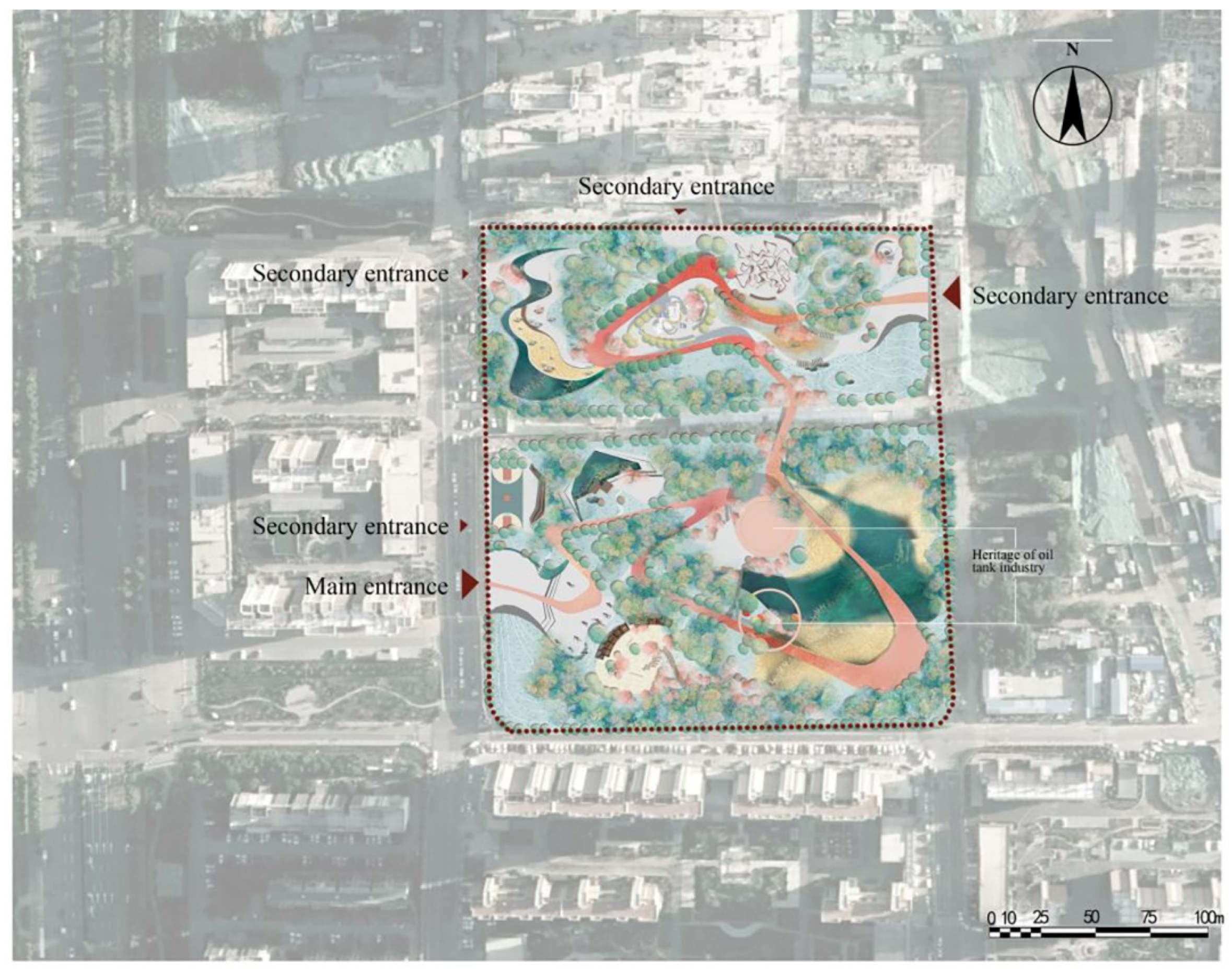
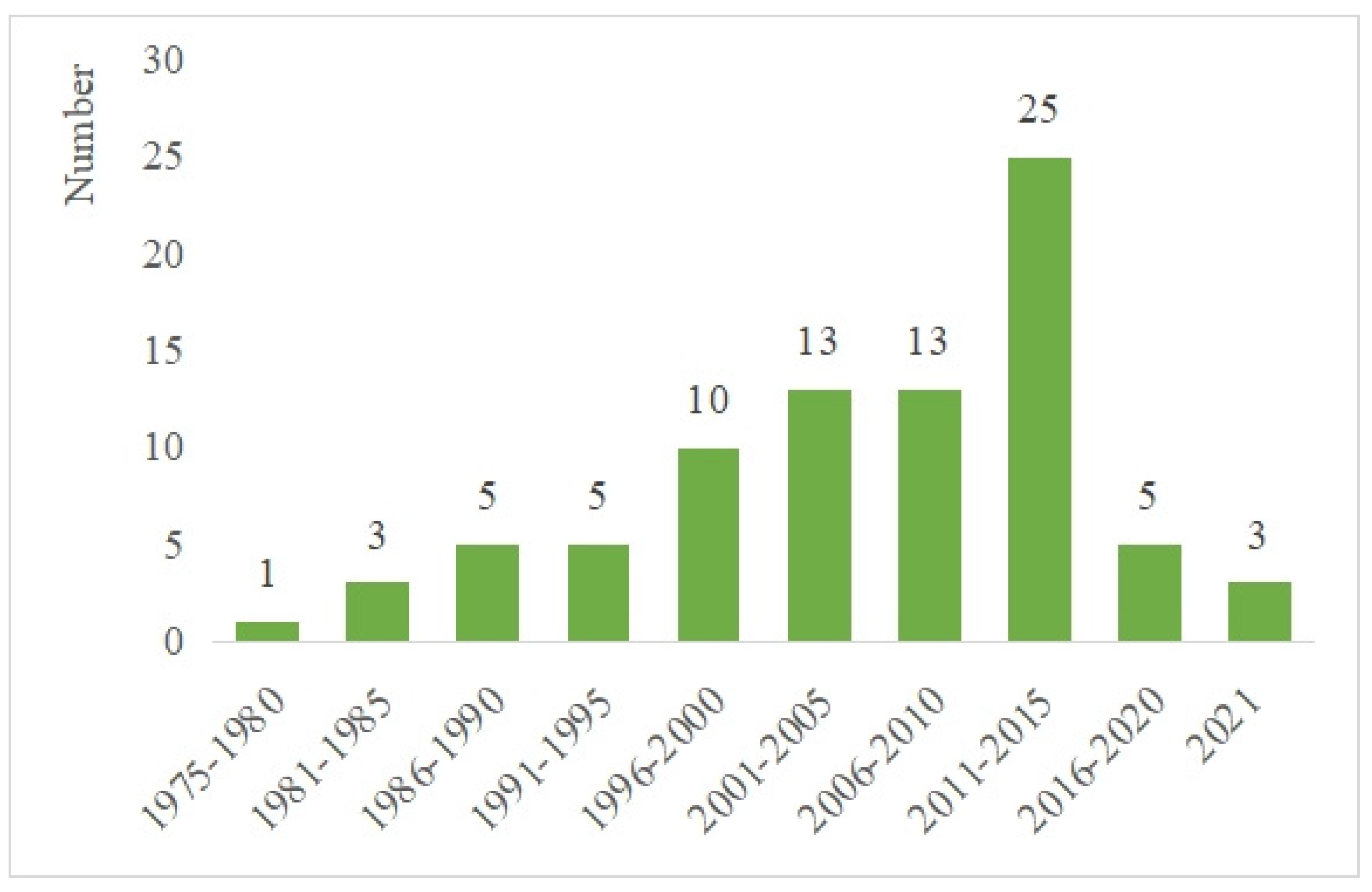


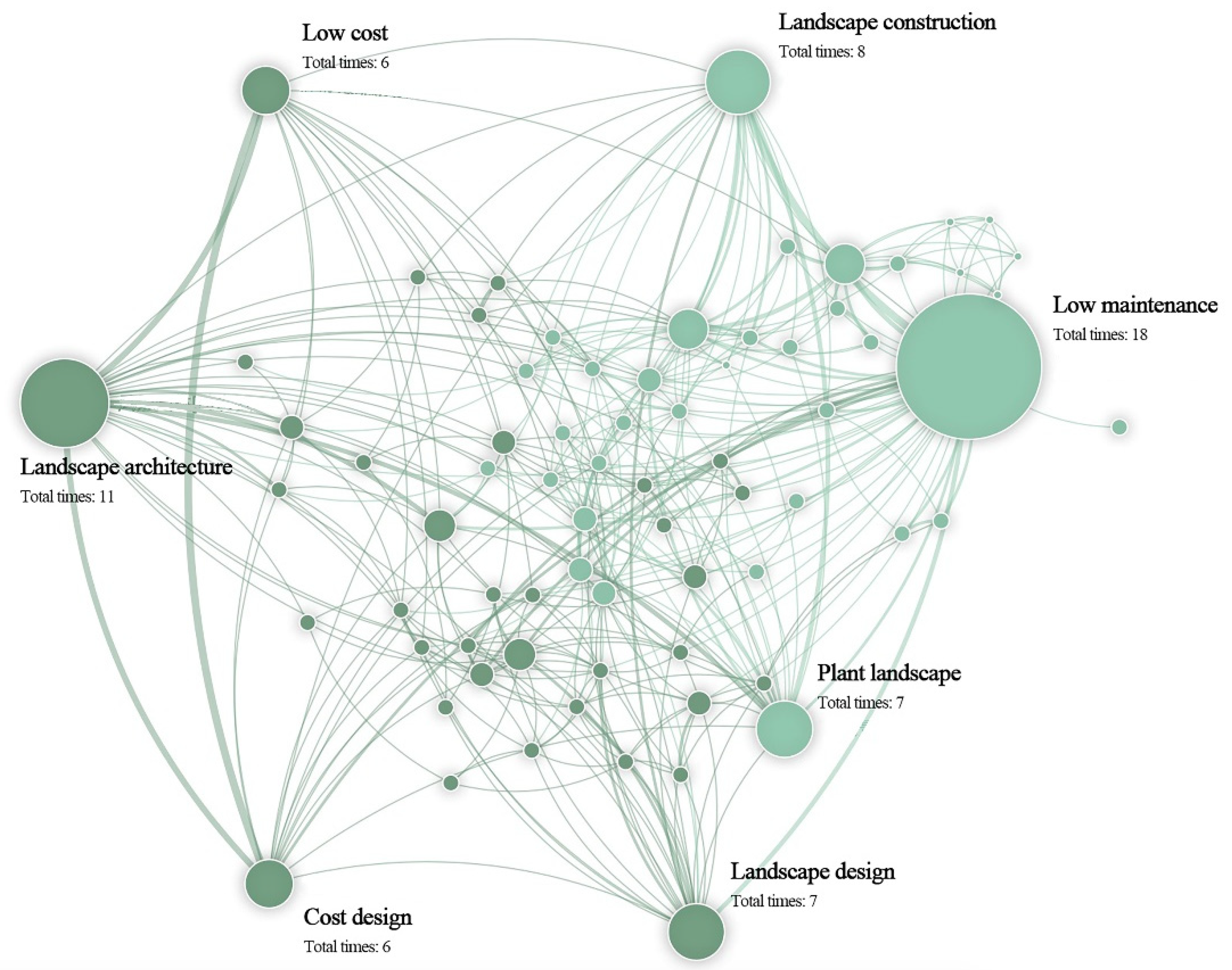
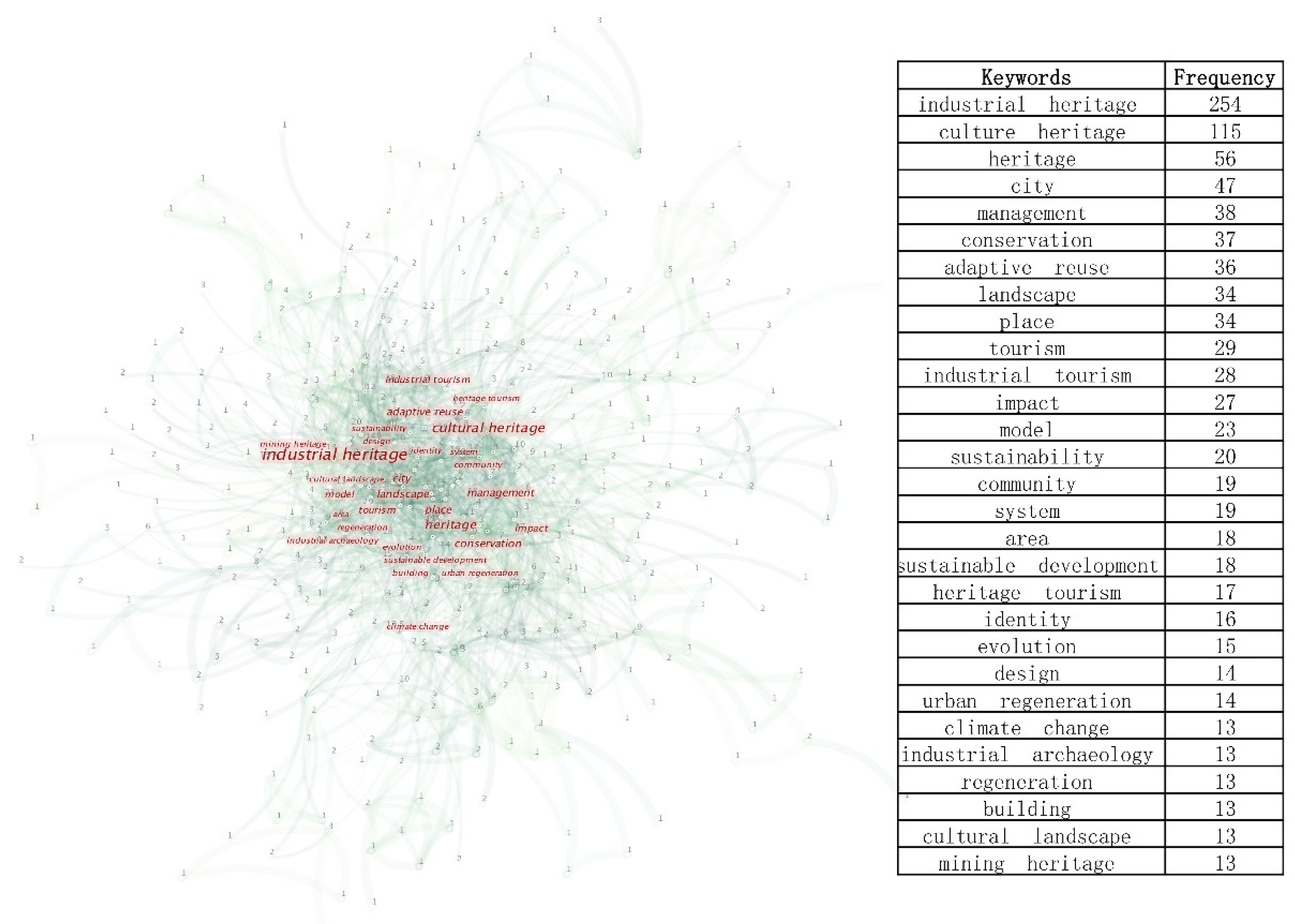
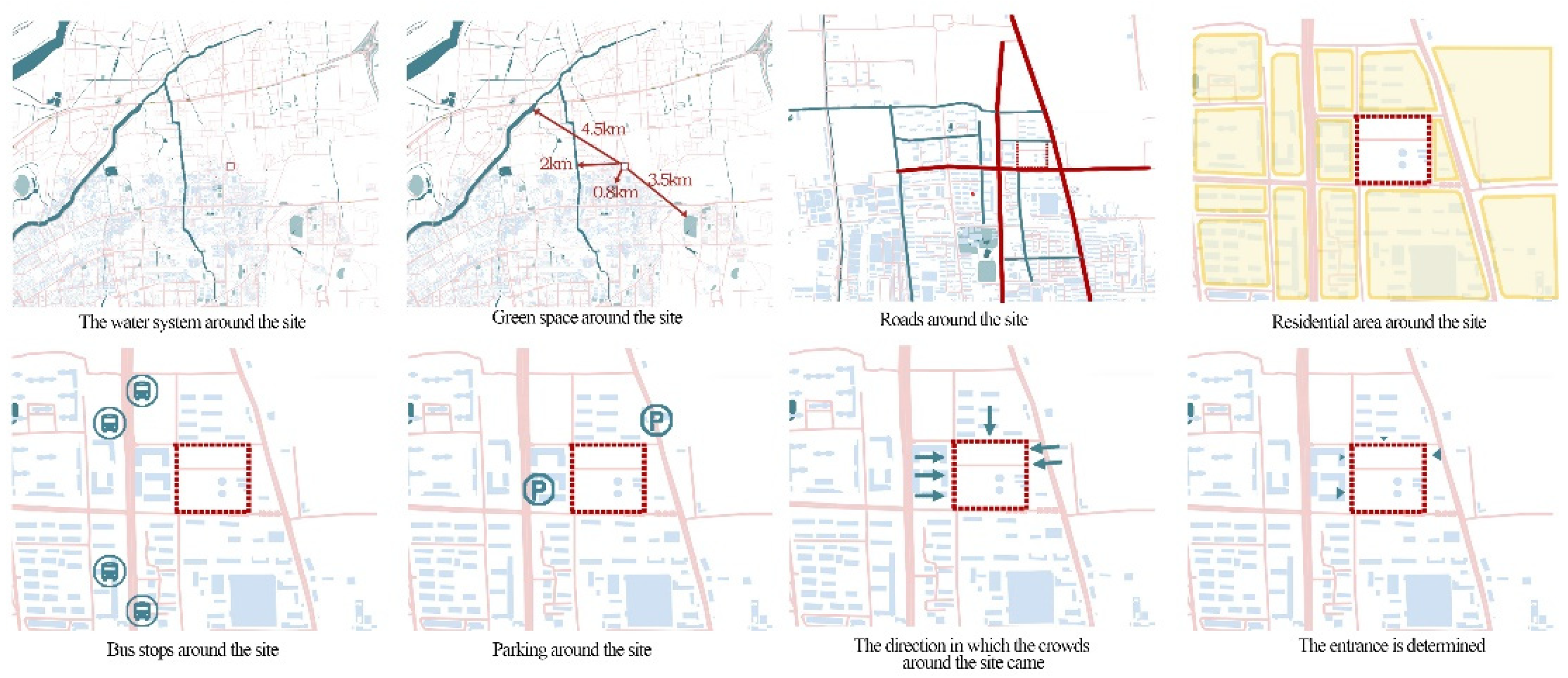
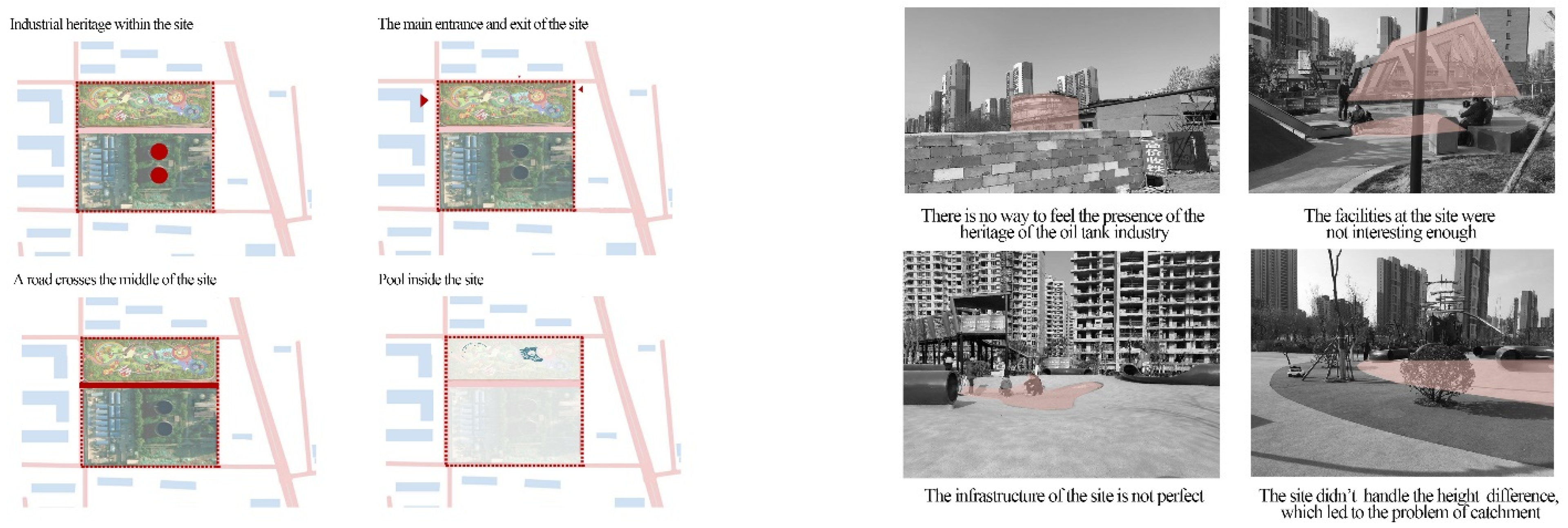
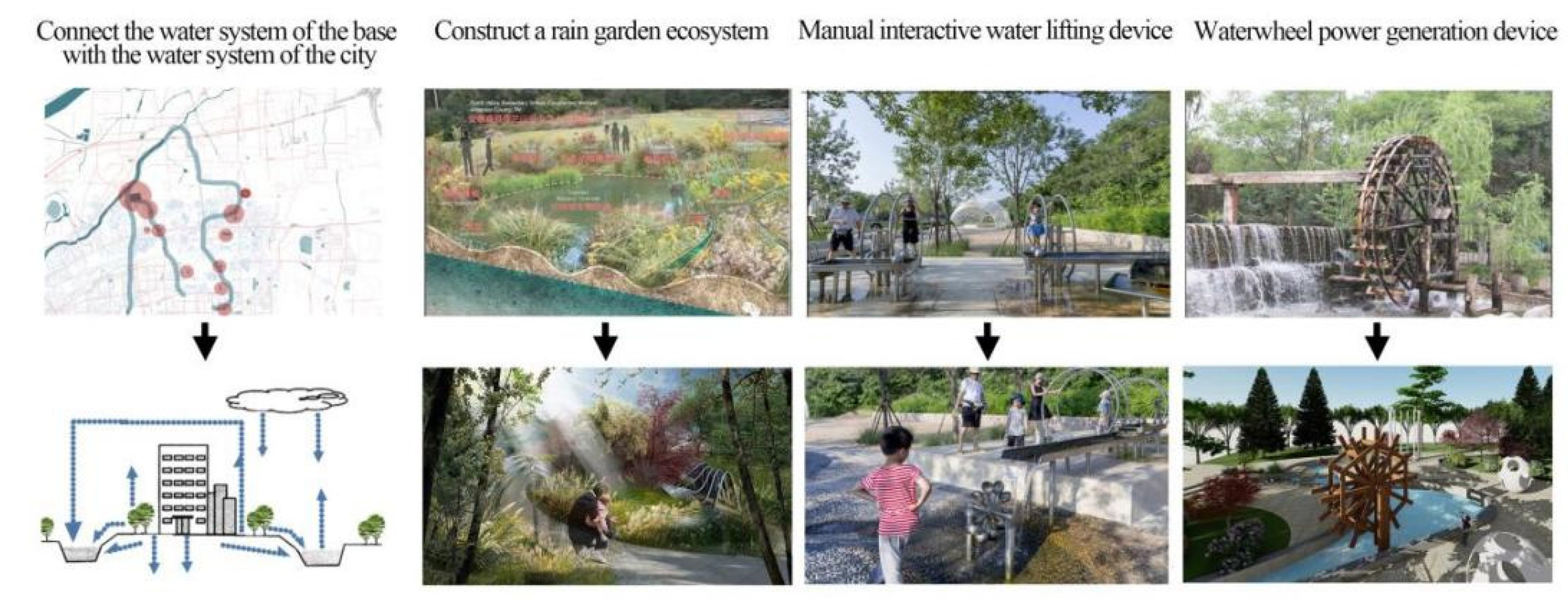





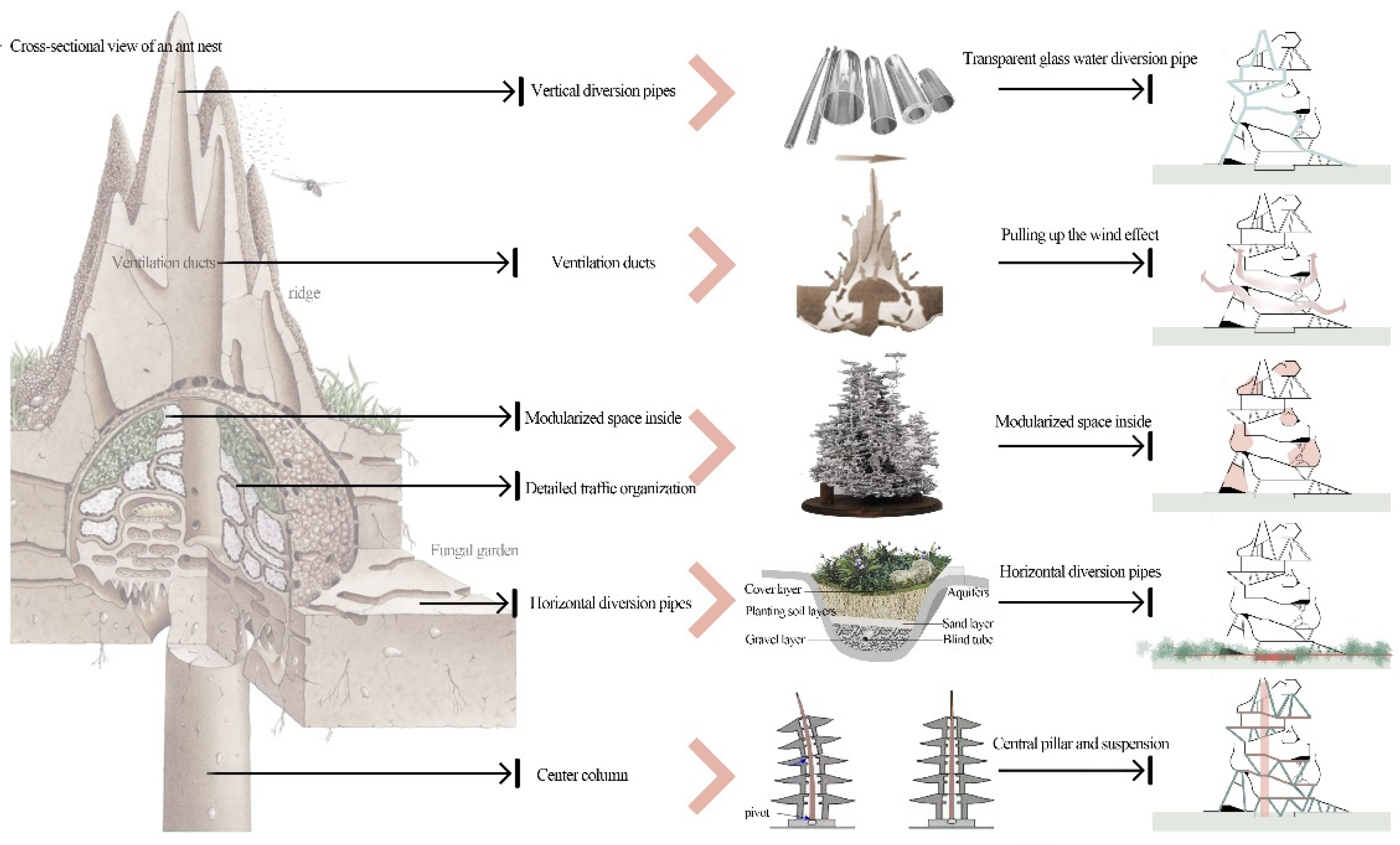
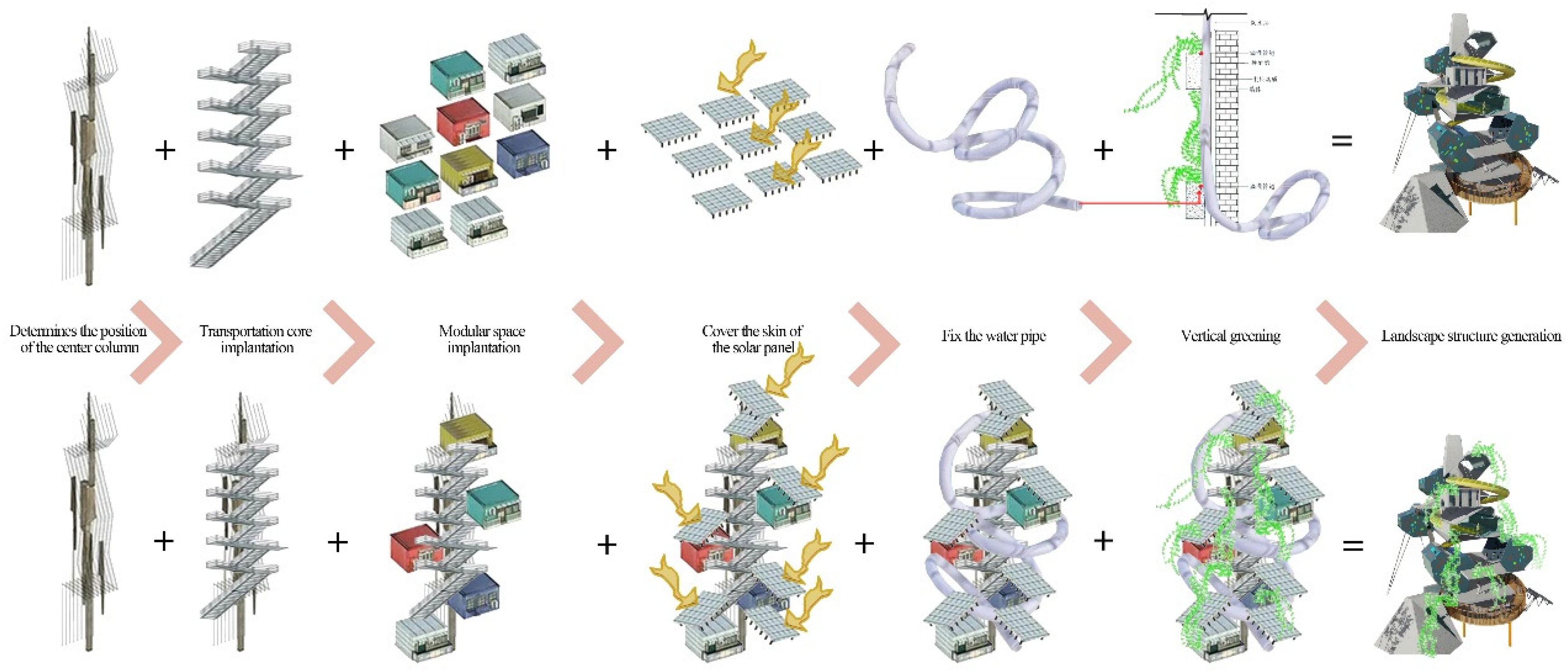

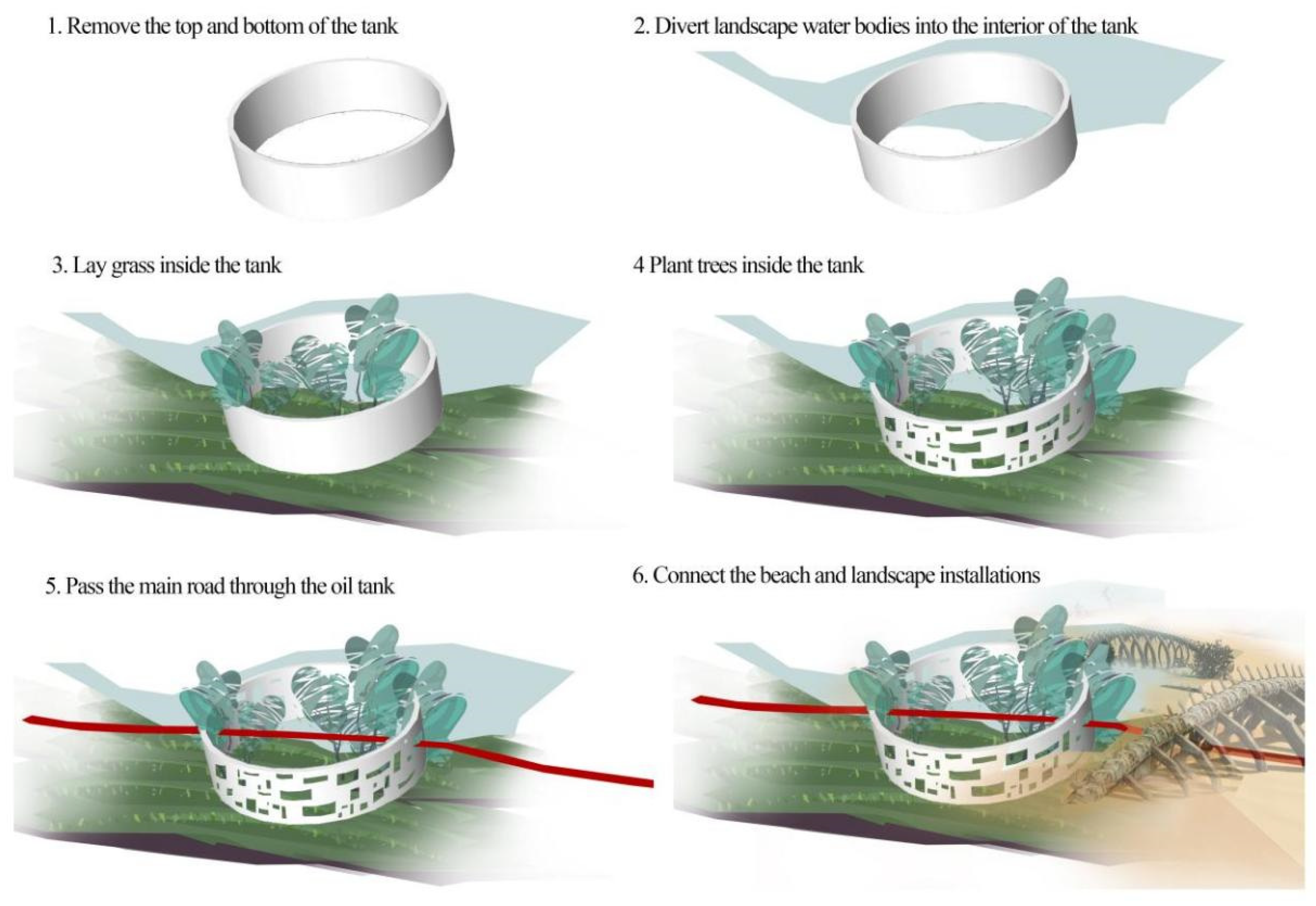

| Subject Word | Web of Science | CNKI |
|---|---|---|
| (Industrial Heritage) | 2323 | 3835 |
| (Sustainable Design) | 54702 | 1201 |
| (Industrial Heritage) AND (Sustainable) | 276 | 126 |
| (Industrial Heritage) AND (Renewal) | 52 | 558 |
| (Industrial Heritage) AND (Reuse) | 130 | 875 |
| (Low-Maintenance Design) | 612 | 66 |
| (Low-Maintenance Design) AND (Sustainable) | 52 | 15 |
| (Industrial Heritage) AND (Secondary Renewal) | 0 | 2 |
| Ecosystem Service | Examples | Strategic in Site | Description |
|---|---|---|---|
| Soil formation | Weathering of rock and the accumulation of organic material. | Terrain treatment | The balance of earthwork and the natural slope angle. |
| Pollination | Provisioning of pollinators for the reproduction of plant populations | Plants | Low maintenance plant selection. |
| Biological control | Keystone predator control of prey species, reduction of herbivory by top predators. | ||
| Refugia | Nurseries, habitat for migratory species, regional habitats for locally harvested species, or over wintering grounds. | ||
| Food production | Production of fish, game, crops, nuts, fruits by hunting, gathering, subsistence farming, or fishing. | ||
| Genetic resources | Medicine, products for materials science, genes for resistance to plant pathogens and crop pests, ornamental species (pets and horticultural varieties of plants). | ||
| Raw materials | The production of lumber, fuel, or fodder. | Materials | Use of energy efficient materials. |
| Gas regulation | Co2/o2 balance, o3 for uvb protection, and sox levels. | Heat, wind | The use of solar energy Use natural air for ventilation circulation. |
| Climate regulation | Green-house gas regulation, dms production affecting cloud formation. | ||
| Disturbance regulation | Storm protection, flood control, drought recovery, and other aspects of habitat response to environmental variability mainly controlled by vegetation structure. | Water | Build a water circulation system. |
| Water regulation | Provisioning of water for agricultural (e.g., irrigation) or industrial (e.g., milling) processes or transportation. | ||
| Water supply | Provisioning of water by watersheds, reservoirs, and aquifers. | Bionic structures | Design of a play tower based on the combination of bionics with thermal energy use and water circulation systems. |
| Erosion control and sediment retention | Prevention of loss of soil by wind, runoff, or other removal processes, storage of silt in lakes and wetlands. | ||
| Nutrient cycling | Nitrogen fixation, n, p, and other elemental or nutrient cycles. | ||
| Waste treatment | Waste treatment, pollution control, detoxification. | ||
| Recreation | Eco-tourism, sport fishing, and other outdoor recreational activities. | ||
| Industrial building renewal | Integration of industrial heritage and nature. | ||
| Cultural | Aesthetic, artistic, educational, spiritual, and/or scientific values of ecosystems. |
Publisher’s Note: MDPI stays neutral with regard to jurisdictional claims in published maps and institutional affiliations. |
© 2022 by the authors. Licensee MDPI, Basel, Switzerland. This article is an open access article distributed under the terms and conditions of the Creative Commons Attribution (CC BY) license (https://creativecommons.org/licenses/by/4.0/).
Share and Cite
Li, Z.; Gai, Q.; Qin, L. Superimposed Renewal of Industrial Heritage under the Guidance of Low Maintenance and Sustainability—Renewal of Refinery Site in Jinan Tianhong Community. Sustainability 2022, 14, 7486. https://doi.org/10.3390/su14127486
Li Z, Gai Q, Qin L. Superimposed Renewal of Industrial Heritage under the Guidance of Low Maintenance and Sustainability—Renewal of Refinery Site in Jinan Tianhong Community. Sustainability. 2022; 14(12):7486. https://doi.org/10.3390/su14127486
Chicago/Turabian StyleLi, Zijia, Qiyu Gai, and Luofeng Qin. 2022. "Superimposed Renewal of Industrial Heritage under the Guidance of Low Maintenance and Sustainability—Renewal of Refinery Site in Jinan Tianhong Community" Sustainability 14, no. 12: 7486. https://doi.org/10.3390/su14127486
APA StyleLi, Z., Gai, Q., & Qin, L. (2022). Superimposed Renewal of Industrial Heritage under the Guidance of Low Maintenance and Sustainability—Renewal of Refinery Site in Jinan Tianhong Community. Sustainability, 14(12), 7486. https://doi.org/10.3390/su14127486





